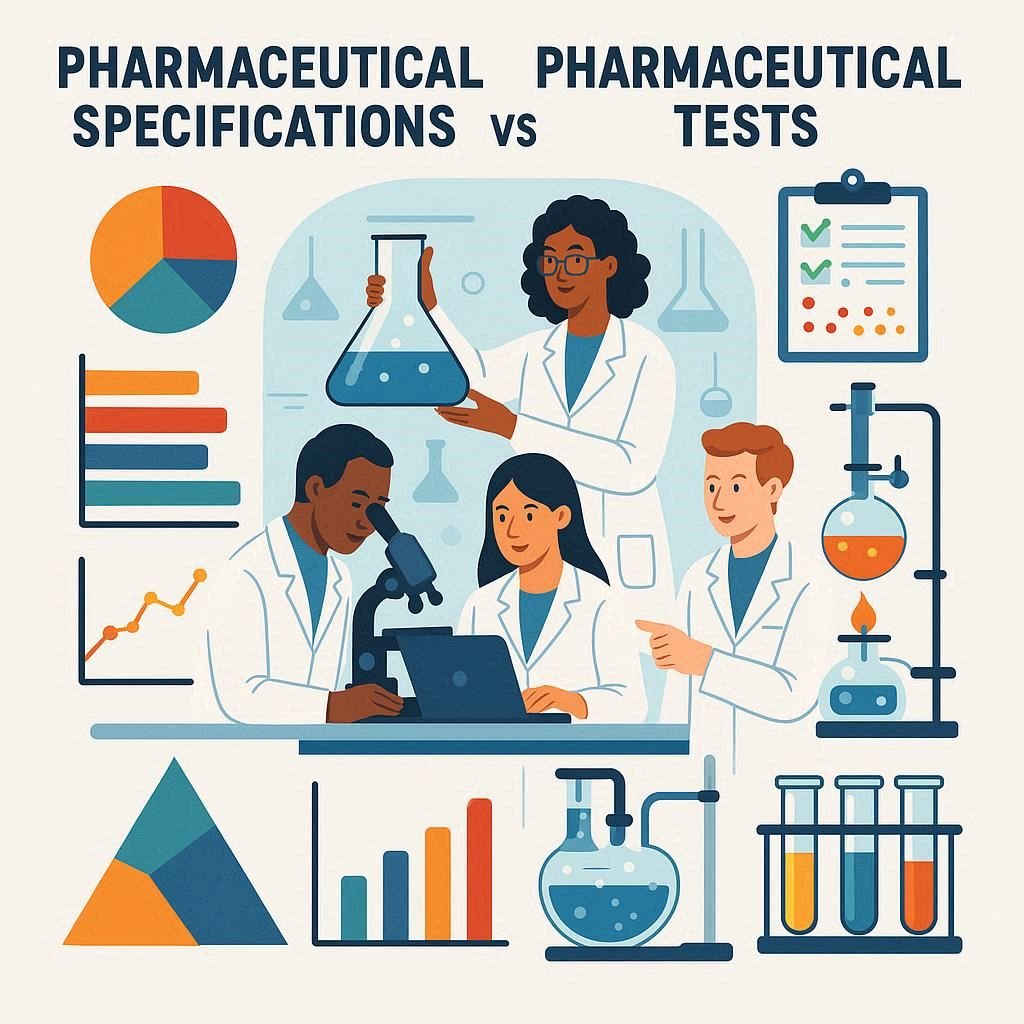
Pharmaceutical specifications define the quality standards a drug product must meet, including acceptance criteria and referenced test methods. Pharmaceutical tests are the laboratory procedures used to measure product characteristics and verify compliance with these specifications. In short, specifications describe what quality is required, while tests define how that quality is measured. Pharmaceutical Specifications vs Pharmaceutical […]
Pharmaceutical specifications define the quality standards a drug product must meet, including acceptance criteria and referenced test methods. Pharmaceutical tests are the laboratory procedures used to measure product characteristics and verify compliance with these specifications. In short, specifications describe what quality is required, while tests define how that quality is measured.
| Feature | Pharmaceutical Specifications | Pharmaceutical Tests |
|---|---|---|
| Definition | Quality standards a drug must meet to be acceptable. | What quality is required? |
| Purpose | Define acceptable quality for safety and efficacy. | Determine if the product meets the defined specifications. |
| Focus | What quality is required. | HPLC is used to measure the actual drug content in the tablet. |
| Components | List of tests, acceptance criteria, and referenced methods. | Step-by-step analytical procedures (e.g., HPLC, dissolution). |
| Example | HPLC is used to measure the actual drug content in the tablet. | The tablet must contain 95–105% of the labelled drug content. |
| Relationship | Set the standards for testing. | Applied to verify compliance with specifications. |
Pharmaceutical specifications are a set of predefined quality standards, including tests, acceptance criteria, and methods, that a drug product or substance must meet. They are needed to ensure the safety, efficacy, and consistent quality of pharmaceutical products.
Pharmaceutical testing refers to the laboratory procedures used to evaluate the physical, chemical, and microbiological properties of a drug. It is needed to confirm that the product meets its specifications and is safe and effective for use.
Types of pharmaceutical specifications include:
1. Raw material specifications (APIs and excipients)
2. In-process specifications (during manufacturing)
3. Finished product specifications (final dosage form)
4. Packaging material specifications
Common types include:
1. API (Active Pharmaceutical Ingredient) specifications
2. Excipient specifications
3. In-process control specifications
4. Finished product specifications
5. Stability specifications
6. Packaging component specifications
Specification Example: Tablet must contain 95–105% of the labeled drug amount.
Test Example: HPLC (High-Performance Liquid Chromatography) used to measure drug content.
Assay: 98–102% of labeled drug content
Dissolution: Not less than 80% in 30 minutes
pH Range: 6.0–7.5
Microbial Limit: Not more than 100 CFU/mL
Specifications define what quality parameters are required.
Tests define how those parameters are measured in practice.
They ensure the drug product consistently meets regulatory, safety, and therapeutic standards throughout its shelf life.
Testing confirms that each batch of a drug meets the required quality standards before release and during its lifecycle.
Specifications are established by manufacturers during development and are approved by regulatory agencies like the FDA, EMA, or WHO.
Yes. Specifications are product-specific and depend on formulation, dosage form, manufacturing process, and intended use.
Specifications define the target criteria, while tests are performed to verify that the actual product meets those targets.
The batch may be rejected, investigated, or recalled, depending on the criticality of the failure and the regulatory requirements.
Further Reading
Quick Links